 Soviet Military Power
Soviet Military Power Soviet Military Power
Soviet Military Power
As early as 1965, the Soviets were writing about an anti-space defense mission, which they described as a component of their strategic defense program. To the Soviets, the main purpose of an anti-space defense would be to destroy space systems in orbits that were being used by the enemy for military purposes. The principal means of destruction would be special aircraft and vehicles controlled either from the ground or by crews onboard a space vehicle.
During the past decade allocated resources equivalent $400 billion to both strategic defensive programs in almost equal amounts - about $20 billion per year for each program. During the same time, the cost of Soviet military space programs approached $80 billion.
Soviet writings on the nature of future war suggest that strategic defenses will be expanding to include defense against cruise missiles and precision-guided conventional munitions that could be targeted against Soviet strategic forces in any protracted conventional war. As a result of this view of global conventional war fought under the constant threat of escalation to the use of nuclear weapons, the Soviets are likely to continue to enlarge their strategic defense and space operations beyond the extensive structure and investment existing today.
In addition to its ABM system, the USSR has a multifaceted operational strategic air defense network that dwarfs that of the US, as well as a wide-ranging research and development program in both traditional and advanced defenses. This active program employs various weapon systems to protect territory, military forces, and other key assets throughout the USSR. Moreover, the Soviets' passive program includes civil defense and structural hardening to protect important political, economic, and military leaders and facilities.
Recent activities in the Soviet strategic defense program are as follows:
- upgrading and modernizing the operational ABM defense, which is around Moscow;
-continued construction of a large phased array radar (LPAR) at Krasnoyarsk for ballistic missile early warning and tracking, in violation of the ABM Treaty;
-construction of three additional LPARs, bringing the number to nine;
-further modernization of strategic air defense forces;
-construction of a new over-the-horizon radar in the Soviet Far East for detecting long-range aircraft operating over the Pacific Ocean;
- continued extensive research into and development of advanced technologies for ballistic missile, ASAT, and air defense, including laser, particle beam, and kinetic energy weapons; and
- improving passive defenses by constructing and maintaining deep underground bunkers and blast shelters for key personnel and enhancing the survivability of some offensive systems through mobility and hardening.
Since the beginning of the nuclear age, the Soviets have placed great importance on limiting the amount of damage the USSR would suffer to key targets in a global war. They have organized and structured their strategic defense forces accordingly. For example, the National Air Defense Forces, which include missile and space defense, became an independent service in the late 1950s and have generally ranked third in prominence within the military, following the Strategic Rocket Forces and the Ground Forces. During the 1960s, the Soviets established the strategic defense missions for ASAT operations and ABM defense.
Soviet strategic defense forces play a role equal to that of offensive forces. In the event of war, nuclear or conventional, Soviet offensive forces are to:
- destroy or neutralize as much of the enemy's air and nuclear assets as possible on the ground or at sea before they are launched; and
- destroy or disrupt enemy air and nuclear associated command, control, and communications.
Soviet defensive efforts, designed to enhance the credibility of offensive forces, are to:
- intercept and destroy surviving retaliatory weapons aircraft and missiles before they reach their targets; and
- protect the Party, state, military forces, industrial infrastructure, and essential working population with active and passive defense measures.
As in a conventional conflict, if a war escalates to the use of strategic nuclear weapons, Soviet military doctrine calls for their forces to seize the initiative. Passive and active defensive systems would try to negate much of the US and allied capability for retaliation. The Soviet military holds defense from nuclear attack as a key, integrated component of their military strategy. From this Soviet perspective, any measures the West would take to defend itself are seen as potentially denying the achievement of key objectives within Soviet war-fighting strategy. For these reasons, the Soviets strenuously oppose the US Strategic Defense Initiative (SDI). At the same time, with consistency and vigor, the Soviets maintain their balanced offensive-defensive strategy in order to fulfill their strategic objectives.
Since 1978, the Soviets have been expanding and modernizing the ABM defenses at Moscow. The single-layer system includes 16 (originally 64) reloadable above-ground GALOSH launchers and the DOG HOUSE and CAT HOUSE battle management radars south of Moscow. The four firing complexes consist of TRY ADD tracking and guidance radars and four exoatmospheric interceptors (nuclear-armed, ground-based missiles designed to intercept reentry vehicles in space shortly before they reenter the Earth's atmosphere).
 The new Moscow ABM system will be a two layer defense composed of silo-based, long-range, modified GALOSH interceptors; silo-based, probably nuclear-armed GAZELLE high-acceleration endoatmospheric interceptors (designed to engage reentry vehicles within the atmosphere); and associated engagement, guidance, and battle management radar systems, including the new PILL BOX large, four sided, phased-array radar at Pushkino north of Moscow. This modernization will bring Moscow's ABM defenses up to 100 operational ABM launchers, the limit permitted by the 1972 ABM Treaty. The new system could become fully operational in the late 1980s.
The new Moscow ABM system will be a two layer defense composed of silo-based, long-range, modified GALOSH interceptors; silo-based, probably nuclear-armed GAZELLE high-acceleration endoatmospheric interceptors (designed to engage reentry vehicles within the atmosphere); and associated engagement, guidance, and battle management radar systems, including the new PILL BOX large, four sided, phased-array radar at Pushkino north of Moscow. This modernization will bring Moscow's ABM defenses up to 100 operational ABM launchers, the limit permitted by the 1972 ABM Treaty. The new system could become fully operational in the late 1980s.
The current Soviet ICBM launch-detection satellite network can provide as much as 30 minutes' tactical warning and can determine the general origin of the missile. Additionally, two over-the-horizon radars that are directed at US ICBM fields could give about 30 minutes warning.
 The next layer of ballistic missile detection consists of 11 large HEN HOUSE ballistic missile early warning radars at 6 locations on the periphery of the USSR. These radars can confirm the warning from the satellite and over the-horizon radar systems, characterize the size of an attack, and provide target-tracking data in support of antiballistic missile forces. The Soviets have improved the capabilities of the HEN HOUSE radars since the signing of the ABM Treaty.
The next layer of ballistic missile detection consists of 11 large HEN HOUSE ballistic missile early warning radars at 6 locations on the periphery of the USSR. These radars can confirm the warning from the satellite and over the-horizon radar systems, characterize the size of an attack, and provide target-tracking data in support of antiballistic missile forces. The Soviets have improved the capabilities of the HEN HOUSE radars since the signing of the ABM Treaty.
Although the Soviet Union continues to maintain and upgrade its older network of ballistic missile detection and tracking systems, including launch-detection satellites andover-the-horizon radars, it is deploying a new series of LPARs.
 The addition of three radars in the western USSR will form almost a complete circle of LPAR coverage around the USSR. These radars provide significantly improved target-tracking and -handling capabilities and add a redundancy in coverage over the existing HEN HOUSE network. In conjunction with the HEN HOUSE radars, the LPAR near Krasnoyarsk in Siberia, when fully operational, will close the final gap in the Soviet ballistic missile early warning radar coverage. The entire network could become fully operational in the mid-199Os.
The addition of three radars in the western USSR will form almost a complete circle of LPAR coverage around the USSR. These radars provide significantly improved target-tracking and -handling capabilities and add a redundancy in coverage over the existing HEN HOUSE network. In conjunction with the HEN HOUSE radars, the LPAR near Krasnoyarsk in Siberia, when fully operational, will close the final gap in the Soviet ballistic missile early warning radar coverage. The entire network could become fully operational in the mid-199Os.
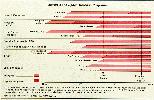 The US and USSR, in signing the ABM Treaty, recognized the need for ballistic missile early warning radars while seeking to prevent their use for a nationwide antiballistic missile system. The ABM Treaty restricts the placement of ballistic missile early warning radars to the periphery of national territory and oriented outward. In that way, the desirable and legitimate goal of early warning could be advanced while minimizing the danger that the radar's target-tracking and impact-prediction capabilities could be used for effective nationwide ABM battle management.
The US and USSR, in signing the ABM Treaty, recognized the need for ballistic missile early warning radars while seeking to prevent their use for a nationwide antiballistic missile system. The ABM Treaty restricts the placement of ballistic missile early warning radars to the periphery of national territory and oriented outward. In that way, the desirable and legitimate goal of early warning could be advanced while minimizing the danger that the radar's target-tracking and impact-prediction capabilities could be used for effective nationwide ABM battle management.
The Krasnoyarsk radar, essentially identical to the other large phased-array radars that the Soviets have acknowledged to be for ballistic missile detection and tracking, violates the 1972 ABM Treaty. The radar is not located on the periphery of the USSR and pointed outward, as required for early warning radars. It is some 750 kilometers from the nearest border Mongolia and it is oriented not toward that border, but across approximately 4,000 kilometers of Soviet territory to the northeast.
The Soviet Union claims that the Krasnoyarsk radar is designed for space tracking rather than for ballistic missile early warning, and therefore does not violate the ABM Treaty. Its design and orientation make clear that this radar is intended for ballistic missile detection and target tracking in the LPAR network.
 The growing network of large phased-array radars, of which the Krasnoyarsk radar is apart, is of particular concern when linked with other Soviet ABM efforts. These radars take years to construct and their existence could allow the Soviet Union to move quickly to deploy a nationwide ABM defense. The degree of redundancy being built into their LPAR network is not necessary for early warning. It is highly desirable, however, for ballistic missile defense.
The growing network of large phased-array radars, of which the Krasnoyarsk radar is apart, is of particular concern when linked with other Soviet ABM efforts. These radars take years to construct and their existence could allow the Soviet Union to move quickly to deploy a nationwide ABM defense. The degree of redundancy being built into their LPAR network is not necessary for early warning. It is highly desirable, however, for ballistic missile defense.
During the 1970s, the Soviets developed components that could be integrated into an ABM system that would allow them to construct individual ABM sites in months rather than the years required for more traditional ABM systems. The development and testing of the components represent a potential violation of the ABM Treaty's prohibition against the development of a mobile land-based ABM system or components. By using such components along with the LPARs, the Soviets could strengthen the defenses of Moscow and defend targets in the western USSR and east of the Urals.
The Soviet Union has conducted tests that have involved air defense radars in ABM related activities. The large number, and consistency over time, of incidents of concurrent operation of ABM and SAM components plus Soviet failure to accommodate fully US concerns, indicate the USSR probably has violated the Treaty's prohibition on testing SAM components in an ABM mode. Additionally, the SA-10 and SA-X-12B/GIANT systems may have the potential to intercept some types of strategic ballistic missiles. Both systems are expected to have widespread deployment. The technical capabilities of these systems highlight the problem that improving technology is blurring the distinction between air defense and ABM systems. This problem will be further complicated as newer, more complex air defense missile systems are developed.
Taken together, all of their ABM and ABM related activities indicate a significant commitment to enhancing the strategic defenses of the USSR and suggest that the Soviets may be preparing an ABM defense of their nation.
The USSR's laser program is considerably larger than US efforts and involves over 10,000 scientists and engineers as well as more than a half-dozen major research and development facilities and test ranges. Much of this research takes place at the Sary-Shagan Missile Test Center, where ABM testing also is conducted. At Sary-Shagan alone, the Soviets are estimated to have several lasers for air defense and two lasers probably capable of damaging some components of satellites in orbit, one of which could be used in feasibility testing for ballistic missile defense applications. The Soviet laser weapons program would cost roughly $1 billion a year in the US.
Scientists in the USSR have been exploring three types of lasers that may prove useful for weapons applications the gas-dynamic, the electric discharge, and the chemical. They have achieved impressive output power levels with these lasers. The Soviets are possibly exploring the potential of visible and very-short-wave-length lasers. They are investigating the excimer, free-electron, and x-ray lasers, and they have been developing argonion lasers.
The Soviets appear generally capable of supplying the prime power, energy storage, and auxiliary components for their laser and other directed-energy weapons programs. They have probably been developing optical systems necessary for laser weapons to track and attack their targets. They produced a 1.2-meter segmented mirror for an astrophysical telescope in 1978 and claimed that this reflector was a prototype for a 25-meter mirror. A large mirror is considered necessary for a long-range space-based laser weapon system.
The USSR has progressed in some cases beyond technology research. It has ground-based lasers that have some capability to attack US satellites and could have a prototype space based antisatellite laser weapon by the end of the decade. Additionally, the Soviets could have prototypes for ground-based lasers for defense against ballistic missiles by the late 1980s and could begin testing components for a large scale deployment system in the early 1990s.
The remaining difficulties in fielding an operational laser system will require more development time. An operational ground-based laser for defense against ballistic missiles probably could not be deployed until the late l990s or after the year 2000. If technological developments prove successful, the Soviets might be able to deploy a space-based laser system for defense against ballistic missiles after the year 2000. The Soviets' efforts to develop high energy air defense laser weapons are likely to lead to ground-based deployments in the early l990s and to naval deployments in the early 1990s and to naval deployments in the mid-1990s.
Since the late 1960s, the Soviets have been exploring the feasibility of using particle beams for a space-based weapon system. They maybe able to test a prototype space-based particle beam weapon intended to disrupt the electronics of satellites in the l990s. An operational system designed to destroy satellites could follow later, and application of a particle beam weapon capable of destroying missile boosters or warheads would require several additional years of research and development.
Soviet efforts in particle beams, particularly ion sources and radio-frequency accelerators for particle beams, are impressive. In fact, much of the US understanding of how particle beams could be made into practical weapons is based on Published Soviet research conducted in the late 1960s and 1970s.
The USSR has conducted research in the use of strong radio-frequency (high-power microwave) signals that have the potential to interfere with or destroy critical electronic components of ballistic missile warheads or satellites. The Soviets could test a ground-based radio-frequency weapon capable of damaging satellites in the 1990s.
The Soviets also have research programs underway on kinetic energy weapons, which use the high-speed collision of a small object with the target as the kill mechanism. In the 1960s, the USSR developed an experimental "gun" that could shoot streams of particles of a heavy metal, such as tungsten or molybdenum, at speeds of nearly 25 kilometers per second in air and more than 60 kilometers per second in a vacuum.
Long-range, space-based kinetic energy weapons for defense against ballistic missiles probably could not be developed until at least the mid-199Os. However, the Soviets could deploy in the near term a short-range, space based system for space station defense or for close-in attack by a maneuvering satellite. Current Soviet guidance and control systems are probably adequate for effective kinetic energy weapons use against some objects in space,
Advanced technology weapons programs including potential advanced defenses against ballistic missiles and ASATs are dependent on remote sensor and computer technologies, areas in which the West currently leads the Soviet Union. The Soviets are devoting considerable resources to acquiring Western know-how and to improving their abilities and expertise in these technologies. An important part of that effort involves the increasing exploitation of open and clandestine access to Western technology. For example, the Soviets operate a well-funded program through third parties for the illegal purchase of US high-technology computers, test and calibration equipment, and sensors.
A key element of Soviet military doctrine calls for passive and active defense to act together to ensure wartime operations and survival. The Soviets have undertaken a major program to harden military assets to make them more resistant to attack. Included in this program are their ICBM silos, launch facilities, and some command-and-control centers.
The Soviets provide their Party and government leaders with hardened alternate command posts located well away from urban centers in addition to many deep underground bunkers and blast shelters in Soviet cities. This comprehensive and redundant network, patterned after a network designed for the Soviet Armed Forces, provides more than 1,500 hardened alternate facilities for more than 175,000 key Party and government personnel throughout the USSR. In contrast, the US passive defense effort is far smaller and more limited. It is in no way comparable to the comprehensive Soviet program.
Elaborate plans also have been made for the full mobilization of the national economy in support of a war effort. Reserves of vital materiel are maintained, many in hardened underground structures. Redundant industrial facilities are in active production. Industrial and other economic facilities are equipped with blast shelters for the work force, and detailed procedures have been developed for the relocation of selected production facilities. By planning for the survival of the essential workforce, the Soviets hope to reconstitute vital production programs using those industrial components that could be redirected or salvaged after an attack.
Additionally, the USSR has greatly emphasized mobility as a means of enhancing the survivability of military assets. The SS-20 and SS-25 missiles, for example, are mobile. The deployment of the rail-mobile SS-X-24 is expected soon. The Soviets are also developing an extensive network of mobile command, control,and communications facilities.
The Soviets continue to field the world's only operational ASAT system. It is launched into an orbit similar to that of the target satellite and, when it gets close enough, destroys the satellite by exploding a conventional warhead. The Soviet co-orbital antisatellite interceptor is reasonably capable of performing its missions, and thus it is a distinct threat to US low-altitude satellites.
Other Soviet systems have ASAT capabilities. The nuclear-armed GALOSH ABM interceptor deployed around Moscow has an inherent ASAT capability against low altitude satellites. The Sary-Shagan lasers maybe capable of damaging sensitive components onboard satellites. Although weather and atmospheric beam dispersion may limit the use of ground-based laser ASATs, such systems would quite likely have the major advantage of being able to refire and therefore to disable several targets.
During the next 10 years, the Soviets are likely to retain their current ASAT-capable systems while moving aggressively ahead in developing and deploying new ASAT systems. Their large-scale ballistic missile defense research and development efforts in laser, particle beam, radio-frequency, and kinetic energy technologies may also soon provide them with significant ASAT capabilities.
The development of a space-based laser ASAT that can disable several satellites is probably a high-priority Soviet objective. The Soviets may deploy space-based lasers for antisatellite purposes in the 1990s, if their technological developments prove successful. Space-based laser ASATs could be launched on demand, or maintained in orbit, or both. By storing a laser ASAT in orbit, the Soviets could reduce the time required to attack a target. This option would decrease the warning time available to the target needed to attempt countermeasures. The Soviets are also developing an airborne laser whose missions could include ASAT, and limited deployment could begin in the early 1990s.
The Soviets operate about 50 types of space systems for military and civilian uses. These systems include manned and man-associated spacecraft; space stations; reconnaissance vehicles; launch-detection satellites; and navigational, meteorological, and communications systems.
The USSR conducts approximately 100 space launches annually. Some launches have put as many as eight satellites in orbit from one launch vehicle. The number of active, usable satellites the Soviets maintain in orbit has increased from about 120 in 1982 to about 150 in 1986. At least 90 percent of the launches and satellites are military related and support both offensive and defensive operations. The USSR tries to mask the true nature of most of its space missions by declaring them as scientific. Because the 1967 Outer Space Treaty requires nations to register space launches with an agency of the United Nations, the Soviets acknowledge most of their space launch activity. Few details, however, are provided. The results and data of these missions are rarely published or disclosed except for some aspects of the manned program. Throughout, the Soviets steadfastly maintain they have no military space program.
The military emphasis is expected to continue in the years ahead. Of the approximately 200 operational Soviet satellites projected to be in orbit by the mid-199Os, about 150 will most likely have purely military missions, such as ocean reconnaissance, electronic intelligence, imagery reconnaissance, and special communications. Another 40 could support joint military-civilian functions, such as providing communications, navigation, and weather data. The manned program will fulfill both military and civilian missions. The approximately 10 remaining satellites could include interplanetary probes and other scientific missions.
The lifetimes and survivability of Soviet satellites are expected to increase in the next 10 years because of the incorporation of more sophisticated technology and the placement of satellites at higher altitudes. These moves would increase the satellites' fields of view and would make them less vulnerable to an ASAT attack.
Under cover of their COSMOS designator, the Soviets continue to develop and deploy space systems designed to support military operations on Earth. They now operate several types of space-based reconnaissance systems. Two of these, the radar ocean reconnaissance satellite and the electronic-intelligence ocean reconnaissance satellite, are used to locate naval forces that could be targeted for destruction by antiship weapons launched from Soviet platforms. The US has no comparable capability. Moreover, the Soviets actively practice their detection and targeting techniques, routinely launching these satellites to monitor both Soviet and NATO naval exercises.
The Soviets continue to expand an already mature satellite reconnaissance program. Several enhancements, such as incorporation of a data-relay satellite system, could improve the timeliness of their satellite reconnaissance data. Demonstrations of flexibility and versatility in launching and deploying their surveillance systems have continued, and the Soviets are capable of redirecting them for worldwide missions as situations dictate. Meanwhile, the satellite imagery reconnaissance capability has been refined, and space-based electronic intelligence assets are being upgraded.
Deployment continues of the Soviet space based global navigation satellite system known as GLONASS. This system will probably be capable of providing highly accurate positioning data to Soviet military and civilian users by the end of this decade. GLONASS is the Soviet version of the US NAVSTAR global positioning system (GPS). In fact, the Soviets acquired data on digital signal processing from GPS documents for inclusion in GLONASS. The GLONASS is being placed in a GPS-like orbit. Based on the 9 to 12 satellites announced for the system, GLONASS would have a worldwide, two-dimensional capability. If the Soviets want GLONASS to provide worldwide, three dimensional navigation updates, they would need to orbit 18 to 24 satellites.
The Soviets are increasing the number and variety of their communications satellites. They have filed their intent with the International Frequency Registration Board to place almost 100 individual communication payloads in more than 25 positions in the geostationary orbit belt. Some of the satellites are expected to be used to relay data between two ground sites, including ships, or between a satellite and ground sites. The Soviets demonstrated this capability by using a data-relay satellite to transmit television reports from the MIR(Peace) space station to the ground. By using such satellites, the Soviets would be able to communicate between ships, other satellites, and ground stations that are not within line of sight of each other. This technique increases the timeliness of these communications.
The Soviets will continue deploying their current launch-detection satellite network. They are probably working on a system for space-based detection of US submarine launched ballistic missiles (SLBMs), as well as European and Chinese missile launches. Although the USSR's land-based ballistic missile defense radar network permits detection of SLBM launches, a space-based geosynchronous launch-detection satellite system could significantly increase warning time. The Soviets probably have the technical capability to deploy an operational satellite system by the end of the decade.
The success of the Soviet space program is due largely to its versatile and reliable inventory of space launch vehicles (SLVs) and to its space launch and support facilities. About every third day, the Soviets launch a satellite, using one of eight types of operational SLVs. The USSR's impressive ability to launch various boosters and to orbit payloads quickly would give the Soviets a distinct operational military advantage in any crisis. Most malfunctioning satellites could be rapidly replaced, and additional satellites could be launched to cover new or expanding crisis areas. Nonetheless, the use of vehicles and satellites in surge launches could have a negative short-term effect by reducing rapidly their total number of available launchers and satellites. The Soviets are already expanding their extensive family of SLVs with new expendable launch vehicles and reusable manned spacecraft. The expected deployment of the medium-lift Titan IIIC-Class SL-X-16, the heavy-lift Saturn V-Class SL-W, a shuttle orbiter, and a space plane will increase the number and payload weight of satellites the Soviets will be capable of orbiting.
The SL-W heavy-lift vehicle will be used to launch the Soviet space shuttle orbiter. Launch pad compatibility testing of an orbiter attached to the SL-W vehicle may already have taken place, and a launch could come in 1987 or 1988. Soviet orbiter development has been heavily dependent on US orbiter propulsion, computer, materials, and airframe design technology. By using US technology and designs, the Soviets were able to produce an orbiter years earlier, and at far less cost, than if they had depended solely on their own technology. Money and scientific expertise could thus be diverted to other areas.
The location of the main engines at the base of the SL-W rather than on the orbiter gives the SL-W added versatility as a heavy-lift vehicle because it can launch heavy payloads other than the orbiter. The SL-W will be able to place payloads of over 100,000 kilograms into low Earth orbit, a figure comparable to the discontinued Saturn V. Potential payloads include modules for a large space station, components for a manned or unmanned interplanetary mission, and perhaps directed-energy ASAT antiballistic missile defense weapons.
The SL-X-16 booster is capable of placing a payload of more than 15,000 kilograms into low Earth orbit. This capability fills a gap in the current SLV inventory for an economical means of launching medium-weight payloads. A payload candidate for the SL-X-16 is the space plane, a different program than the space shuttle. A subscale version of this vehicle has been flight-tested in orbit and a full-scale version could be in production. This small, manned spacecraft could be used for quick-reaction, real-time reconnaissance missions, satellite repairs and maintenance, crew transport, space station defense, satellite inspection and, if necessary, negation. The SL X-16 has been flight-tested, placing at least three payloads into orbit, and will soon be fully operational. The Soviets are not expected to launch the space plane until they have had sufficient experience with the SL-X-16. Testing of a full-scale space plane could begin in the late 1980s.
When these two systems become operational, the Soviets will have 10 types of expendable launch vehicles, 4 of which will be man associated, and 3 different manned space vehicles - SOYUZ-TM (an improved SOYUZ-T crew ferry vehicle), the shuttle, and the space plane. The combination of these systems will give the Soviets even greater versatility and redundancy to conduct and to augment military operations in space.
Despite a minor setback in late 1985, the Soviets made considerable progress toward achieving a permanent, militarily significant, manned presence in near-Earth orbit during 1986. Although forced to curtail a manned mission on their SALYUT-7/COSMOS-1686 space station complex in November 1985 when one of their cosmonauts became ill, the Soviets still launched the core vehicle of a modular space station in February 1986. MIR, as designated by the Soviets, is an impressive advancement over SALYUT-7, having enhanced solar energy and electrical power systems, greater computer capabilities, and individual "cabins" for crew members. Most significant, while SALYUT-7 had only two docking ports, MIR has six - one rear axial docking port, one forward axial port, and four forward lateral ports.
 The MIR core vehicle is essentially a habitation and flight control center. Most of the cosmonauts' military and scientific work will take place in specially outfitted space station modules. These modules will provide the Soviets with greater flexibility in performing missions such as reconnaissance, targeting, and military-related R&D, as well as research in fields such as astrophysics, biology, and materials processing.
The MIR core vehicle is essentially a habitation and flight control center. Most of the cosmonauts' military and scientific work will take place in specially outfitted space station modules. These modules will provide the Soviets with greater flexibility in performing missions such as reconnaissance, targeting, and military-related R&D, as well as research in fields such as astrophysics, biology, and materials processing.
With the launch of MIR, the space station module, and SOYUZ-TM, the Soviets are well on their way to fulfilling their goal of establishing a permanent manned presence in space. The modular space station will probably house 3 to 12 cosmonauts. In the early-to-mid 1990s, the Soviets should be able to construct a very large modular space station. They have discussed ultimately housing up to 100 cosmonauts in this large space complex.
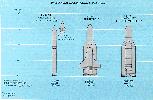 In March 1986, SOYUZ T-15 carried the first crew to MIR - mission commander Colonel Leonid Kizim and civilian flight engineer Vladimir Solovyov. These cosmonauts were in orbit for only 125 days, a short mission by Soviet standards, and they returned to Earth in July. Nonetheless, it was the most widely publicized Soviet manned space flight in 1986. Key events were often announced in advance and some events were televised live. These unprecedented developments were, in part, an effort to publicize Soviet accomplishments.
In March 1986, SOYUZ T-15 carried the first crew to MIR - mission commander Colonel Leonid Kizim and civilian flight engineer Vladimir Solovyov. These cosmonauts were in orbit for only 125 days, a short mission by Soviet standards, and they returned to Earth in July. Nonetheless, it was the most widely publicized Soviet manned space flight in 1986. Key events were often announced in advance and some events were televised live. These unprecedented developments were, in part, an effort to publicize Soviet accomplishments.
The mission was significant in an operational sense, however, because Kizim and Solovyov conducted the first manning and checkout of MIR, the initial use of a data-relay satellite to communicate with them, and the first station-to-station crew transfers. In early may, Kizim and Solovyov departed MIR aboard SOYUZ T-15 and docked with the SALYUT-7/COSMOS-1686 complex. After conducting numerous experiments and two sessions of extravehicular activity, the cosmonauts returned to MIR in late June and to Earth in mid-July.
In other significant developments, the USSR announced that international crew visits to the MIR complex will start in the fall of 1987, beginning with a Syrian cosmonaut. A Frenchman and a Bulgarian are scheduled to visit MIR on separate flights during 1988, and the Soviets are evidently discussing similar missions with other countries. At least one such mission a year can be expected during MIR's lifetime.
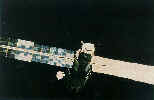 The Soviet manned space program occupies a unique position in the USSR's space efforts. It is heavily publicized to demonstrate the peaceful nature and technological superiority of the USSR's space efforts. Visits to the Soviet space station by foreign cosmonauts and the long missions by Soviet cosmonauts have been reported with great fanfare in the nation's news media. Nonetheless, the Soviets have made a strong commitment to using the manned space program to accelerate their drive to achieve space superiority.
The Soviet manned space program occupies a unique position in the USSR's space efforts. It is heavily publicized to demonstrate the peaceful nature and technological superiority of the USSR's space efforts. Visits to the Soviet space station by foreign cosmonauts and the long missions by Soviet cosmonauts have been reported with great fanfare in the nation's news media. Nonetheless, the Soviets have made a strong commitment to using the manned space program to accelerate their drive to achieve space superiority.
Soviet literature reports that the military applications of remote sensing, oceanography, meteorology, and geodesy have been the focus of repeated cosmonaut investigations. Even subjects such as astronomical observations also performed by cosmonauts, have military uses. Such investigations, for example, can provide data useful for maintaining the orientation of certain equipment to an accuracy of a few arc-seconds, a capability needed to aim directed-energy weapons.
The ability to rendezvous and manually dock with uncooperative spacecraft, which Soviet cosmonauts demonstrated in 1985 and 1986 also has military applications. Cosmonauts use a laser rangefinder, a night vision device, and an optical sight while performing this operation. The Soviets state that this procedure will allow the rescue of cosmonauts stranded in orbit, but it could also be useful for repairing friendly satellites and for inspecting and disabling enemy satellites.
Conducting materials-processing experiments is an important cosmonaut function that has both civilian and military applications. Soviet efforts in this field, however, have concentrated on the production of substances with militarily significant applications regarding the development of semiconductor devices, infrared and optical detectors, and electro-optical systems.
Another crucial cosmonaut activity is Earth observation, which has implications for reconnaissance and targeting applications. The Soviets report that their cosmonauts have used visual observations, cameras, radars, spectrometers, and multispectral electro-optical sensors in their observations from SALYUT space stations. These experiments suggest the Soviets are evaluating their ability to locate, identify, and track targets from outer space as the first step toward designing a space weapons platform for use against targets in space and on Earth. Such a platform may eventually be used for ASAT and ballistic missile defense and operations as well as for space station defense.
The most ambitious space goal the Soviets have set is a cosmonaut mission to Mars. To undertake such a mission, the Soviets would need to lift very heavy components into low Earth orbit and to assemble them there. The SL-W will give them that capability. They would have to sustain cosmonauts in orbit for at least a year. A manned mission to Mars is a major reason for the long stays Soviet cosmonauts have undertaken on SALYUT stations. The cost of such a mission would be tremendous, but the Soviets would most likely expend the funds. Although very challenging, the Soviets could launch a manned mission to Mars in the first decade of the 21st century and probably could conduct a non-stop fly-by mission to Mars before the end of this century.
The high priority the Soviets are giving to their space program is reflected in the rapid overall growth of the program - a program that is absorbing a large share of the nation's most advanced and productive technology. Since 1980, the estimated dollar costs of the Soviet space effort have more than doubled, owing largely to programs for the manned space stations, new launch vehicles, supporting facilities, and the shuttle orbiter. The projected rate of growth in the space program, driven by the ambitious space-based manned program and future communications satellites, is expected to outpace overall trends in both military spending and GNP well into the future.
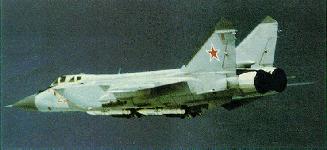 The USSR continues to modernize and expand what is already the most extensive strategic air defense network in the world. The
mission is to be carried out by a strong pre-positioned national air defense force established in peacetime according to a unified concept and plan. The leadership appears to be in constant search for the optimum organizational structure of the air defense assets.
The USSR continues to modernize and expand what is already the most extensive strategic air defense network in the world. The
mission is to be carried out by a strong pre-positioned national air defense force established in peacetime according to a unified concept and plan. The leadership appears to be in constant search for the optimum organizational structure of the air defense assets.
Major organizational changes instituted in 1980 transferred control of air defense aircraft, SAMs, and radars from national air defense authorities to local military district commanders. This change was probably implemented to provide battlefield commanders with greater flexibility. Even after reorganizing, the Soviets appeared to be dissatisfied with their air defense structure.
More recent shifts are apparently resubordinating surface-to-air missiles and aircraft back to the national air defense forces. The rationale may involve a desire for greater centralized control over weapons rather than the flexibility of the local commander in making certain decisions.

The Soviets have deployed a large number of strategic air defense systems with capabilities against aircraft flying at medium and high altitudes. They are now in the midst of a major effort to improve their capabilities against aircraft and cruise missiles that operate at low altitudes.
This effort includes upgrading their early warning and surveillance systems; deployment of more efficient data-transmission systems; as well as development and initial deployment of new aircraft, associated air-to-air missiles, SAMs, and airborne warning and control system (AWACS) aircraft.
Currently, the Soviets have more than 9,000 strategic SAM launchers, nearly 5,000 tactical SAM launchers (excluding handheld), and some 10,000 air defense radars. Approximately 2,250 air defense forces interceptor aircraft are dedicated to strategic defense. An additional 2,100 interceptors assigned to Soviet air Forces could be drawn upon for strategic defense missions. Collectively, these assets present a formidable defense barrier.
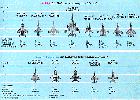 The most capable Soviet air defense interceptor aircraft, the FOXHOUND, has a look-down/shoot-down and multiple-target engagement capability. Over 150 FOXHOUNDs are now operationally deployed at several locations from the Arkhangelsk area in the northwestern USSR to the Soviet Far East. Thus far, the FOXHOUND has been dedicated to homeland air defense. Two new fighters, the FLANKER and the FULCRUM, also have look-down/shoot-down capabilities and are designed to be highly maneuverable in air-to-air combat. The Soviets have deployed approximatively 300 FULCRUMs to operational regiments in theater forces and are expected to introduce this aircraft into the homeland defense interceptor role in the future. They also have begun deploying the longer range FLANKER, both to strategic aviation and into air defense interceptor units in the USSR.
The most capable Soviet air defense interceptor aircraft, the FOXHOUND, has a look-down/shoot-down and multiple-target engagement capability. Over 150 FOXHOUNDs are now operationally deployed at several locations from the Arkhangelsk area in the northwestern USSR to the Soviet Far East. Thus far, the FOXHOUND has been dedicated to homeland air defense. Two new fighters, the FLANKER and the FULCRUM, also have look-down/shoot-down capabilities and are designed to be highly maneuverable in air-to-air combat. The Soviets have deployed approximatively 300 FULCRUMs to operational regiments in theater forces and are expected to introduce this aircraft into the homeland defense interceptor role in the future. They also have begun deploying the longer range FLANKER, both to strategic aviation and into air defense interceptor units in the USSR.
These three aircraft are equipped with three new air-to-air missiles. The FOXHOUND carries the long-range AA-9, and the FULCRUM and the FLANKER carry the medium-range AA-10 and the short-range AA-11. All can be used against low-flying targets.
The USSR also is deploying the MAINSTAY AWACS aircraft, which will substantially improve Soviet capabilities for airborne early warning and air battle management, especially against low-flying aircraft. The MIDAS, a tanker variant of the CANDID, is being introduced into the Soviet aircraft inventory and will be used in support of the strategic bombers and various air defense elements, including the new MAINSTAY.
The USSR also has an active research and development program designed to improve its air surveillance network. In 1983, the Soviets began to deploy two types of air surveillance radars that will enhance Soviet capabilities for air defense, electronic warfare, and early warning of cruise missile and bomber attacks. The Soviet's are also continuing to deploy improved air surveillance data systems that can rapidly pass data from outlying radars through the air surveillance network to ground-controlled intercept sites and SAM command posts.
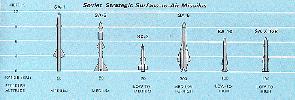 Soviet strategic surface-to-air missiles provide low-to-high altitude barrier, area, and terminal defenses under all weather conditions. Five systems are now operational: the SA-1, SA-2, and SA-3, and the more capable SA-5 and SA-10. Over the years, the Soviets have continued to deploy the long-range SA-5 and have repeatedly modified this system. Further deployments and upgrades are probable in order to enhance the SA-5's capability to work with the newer SA-10. The even more capable all-altitude SA-X-12B/GIANT will soon become operational, thus further enhancing soviet strategic defenses.
Soviet strategic surface-to-air missiles provide low-to-high altitude barrier, area, and terminal defenses under all weather conditions. Five systems are now operational: the SA-1, SA-2, and SA-3, and the more capable SA-5 and SA-10. Over the years, the Soviets have continued to deploy the long-range SA-5 and have repeatedly modified this system. Further deployments and upgrades are probable in order to enhance the SA-5's capability to work with the newer SA-10. The even more capable all-altitude SA-X-12B/GIANT will soon become operational, thus further enhancing soviet strategic defenses.
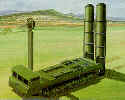 The SA-10 offers significant advantages over older strategic surface-to-air missile systems, including multitarget handling and engagement characteristics, a capability against low
altitude targets with small radar cross-sections such as cruise missiles, a capability against tactical ballistic missiles, and possibly a potential to intercept some types of strategic ballistic missiles.
The SA-10 offers significant advantages over older strategic surface-to-air missile systems, including multitarget handling and engagement characteristics, a capability against low
altitude targets with small radar cross-sections such as cruise missiles, a capability against tactical ballistic missiles, and possibly a potential to intercept some types of strategic ballistic missiles.
The first SA-10 site became operational in 1980. Over 80 sites are now operational and work is progressing on at least another 20 sites. Nearly half of these sites are located near Moscow. This emphasis on Moscow as well as the deployment patterns noted for the other SA-10 sites suggest a first priority on terminal defense of command-and-control, military, and key industrial complexes.
 In keeping with their drive toward mobility as a means of weapons survival, the Soviets have deployed a number of mobile SA-10 systems. This version, designated SA-10b, could be used to support Soviet theater forces and to permit periodic changes in the location
of SA-10 sites within the USSR to counter the various kinds of US retaliatory forces more effectively.
In keeping with their drive toward mobility as a means of weapons survival, the Soviets have deployed a number of mobile SA-10 systems. This version, designated SA-10b, could be used to support Soviet theater forces and to permit periodic changes in the location
of SA-10 sites within the USSR to counter the various kinds of US retaliatory forces more effectively.
The Soviets also have begun deploying another important mobile SAM system, the tactical SA-12A/GLADIATOR, and are flight-testing an even more capable, longer range, higher altitude complement, the SA-X-12B/GIANT. The SA-12 missile system is capable of intercepting aircraft at all altitudes as well as cruise missiles and tactical ballistic missiles.
As previously noted, the SA-X-12B may have the potential to intercept some types of strategic ballistic missiles. This SA-X-12B capability is a serious development because this system is expected to be deployed widely throughout the USSR. It could, if properly supported, add a measure of point-target defense coverage for a nationwide ABM deployment.